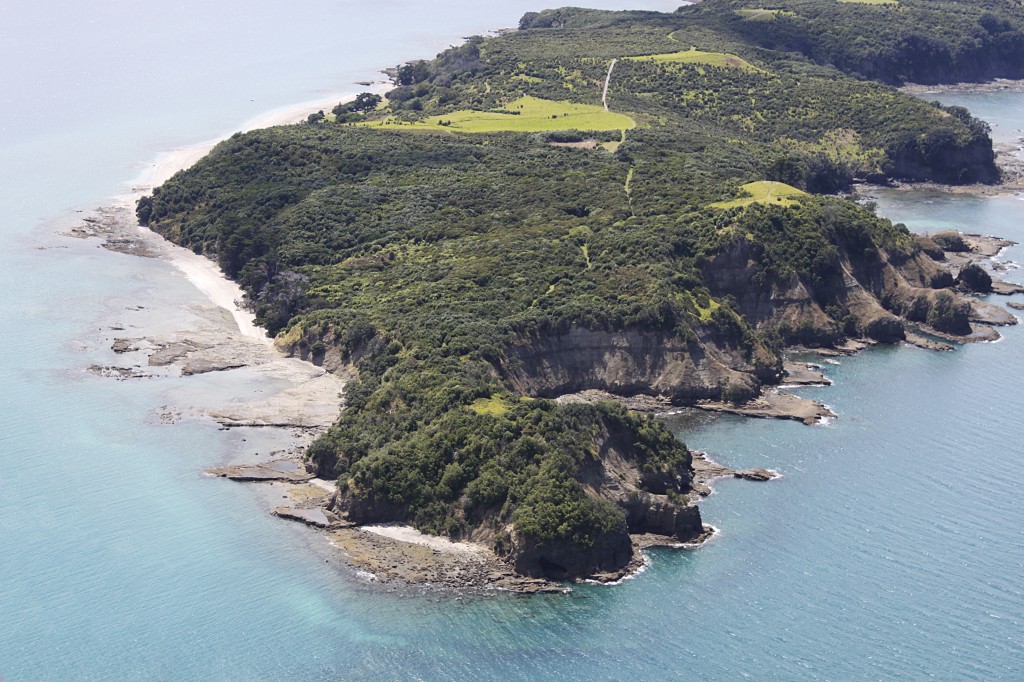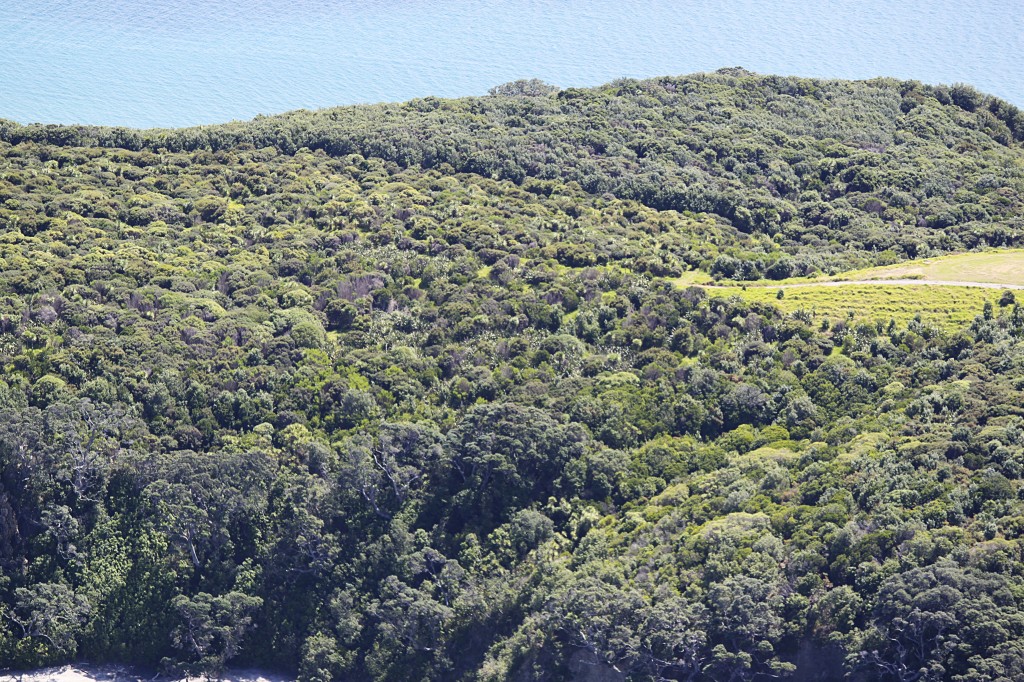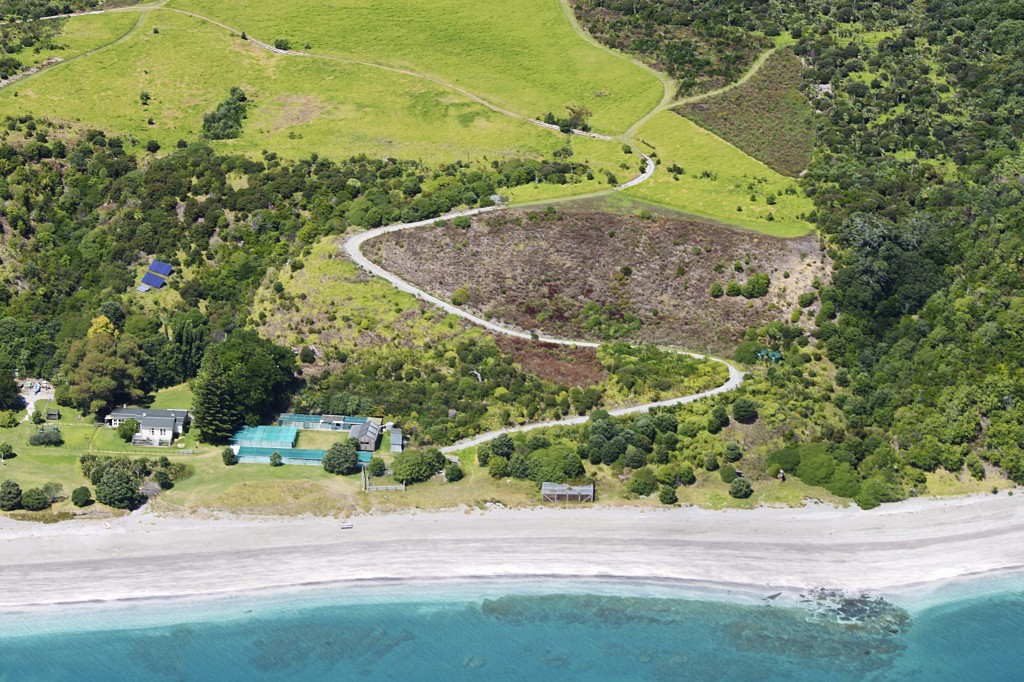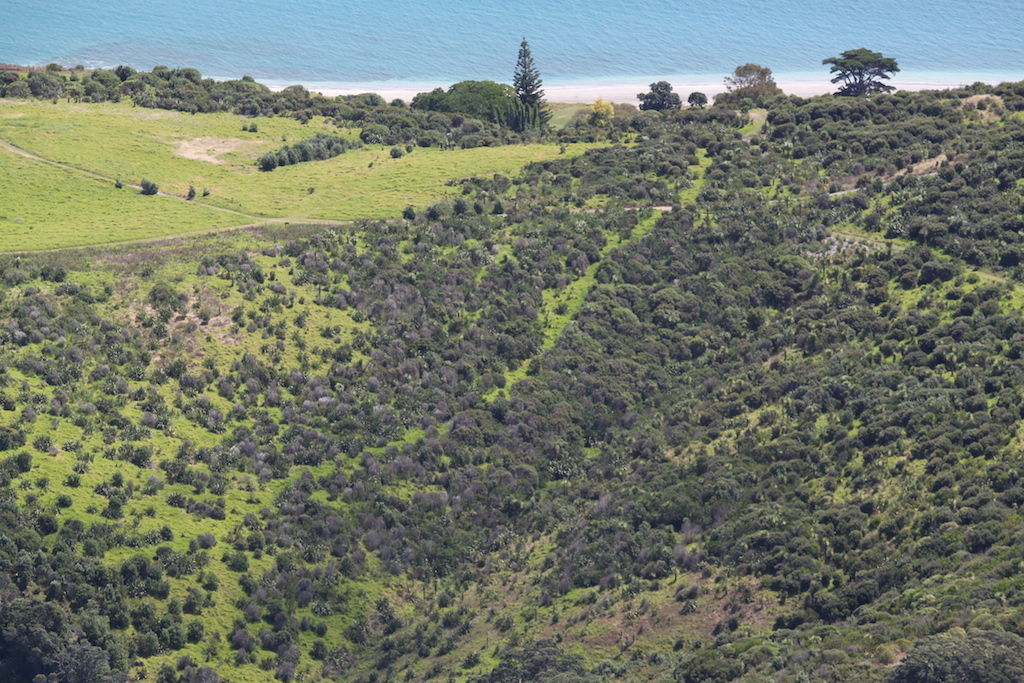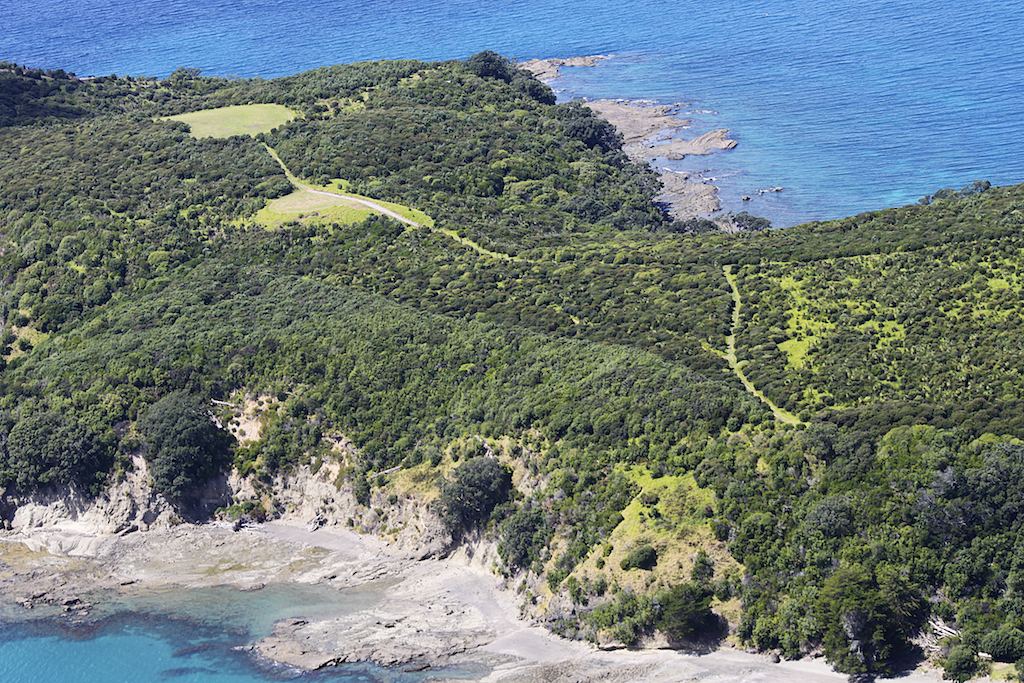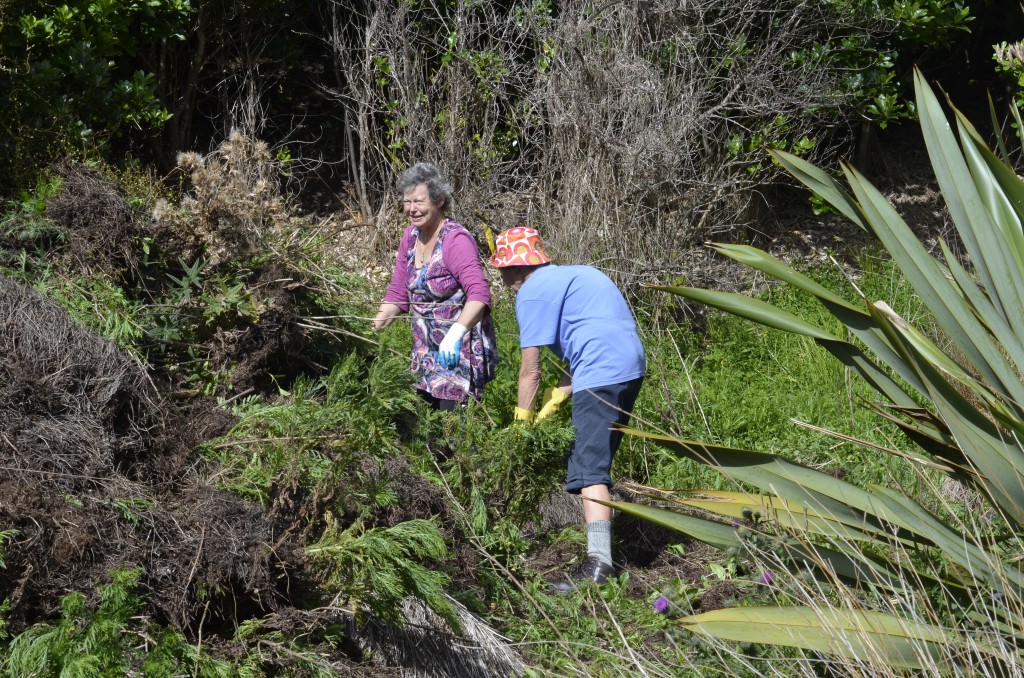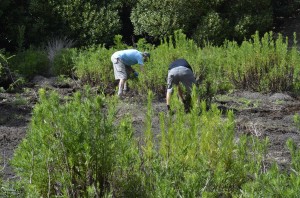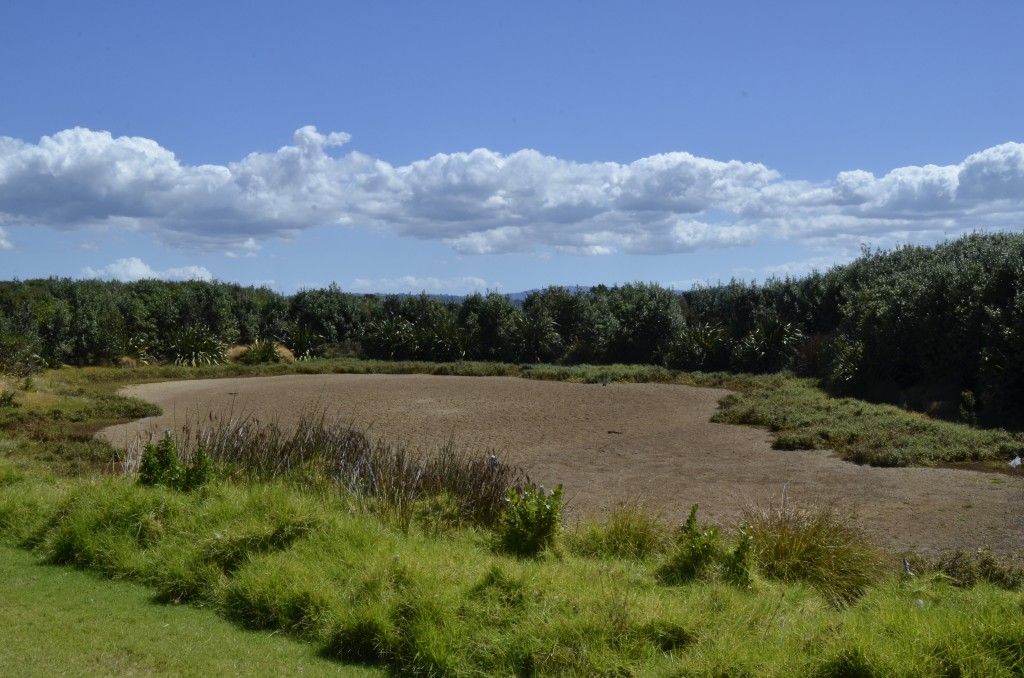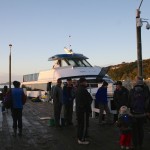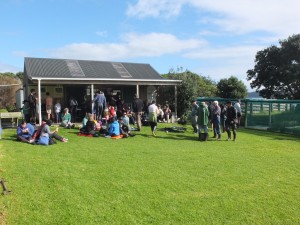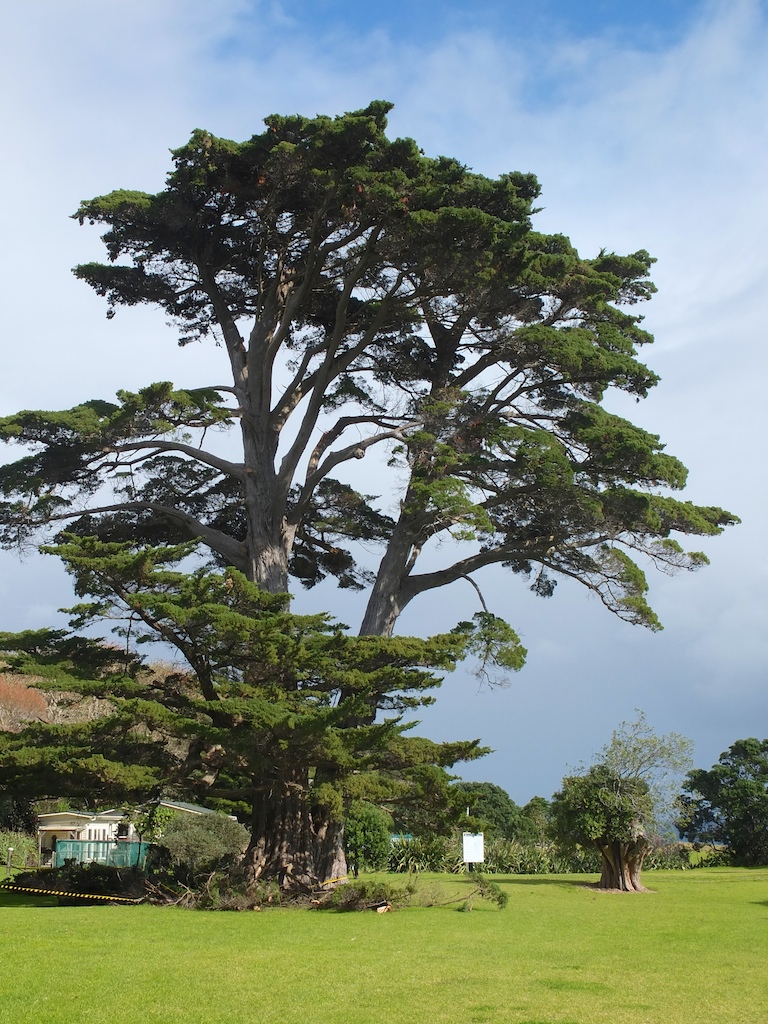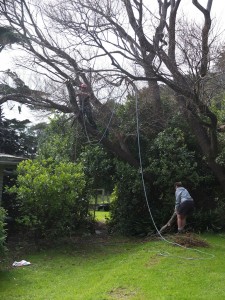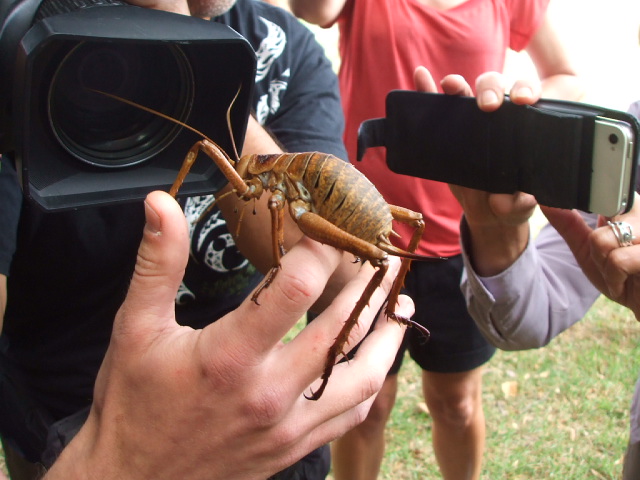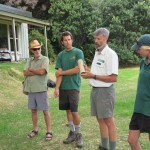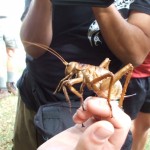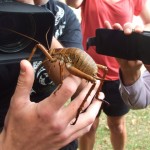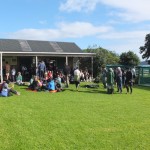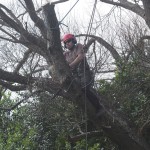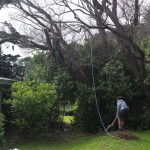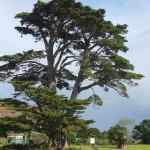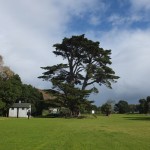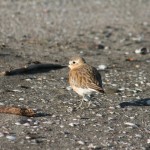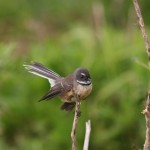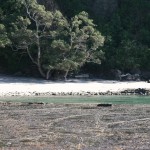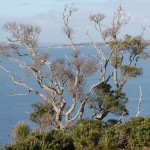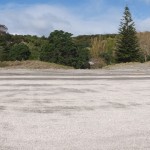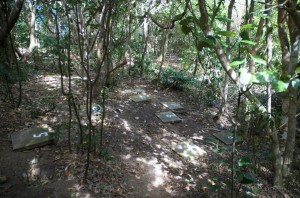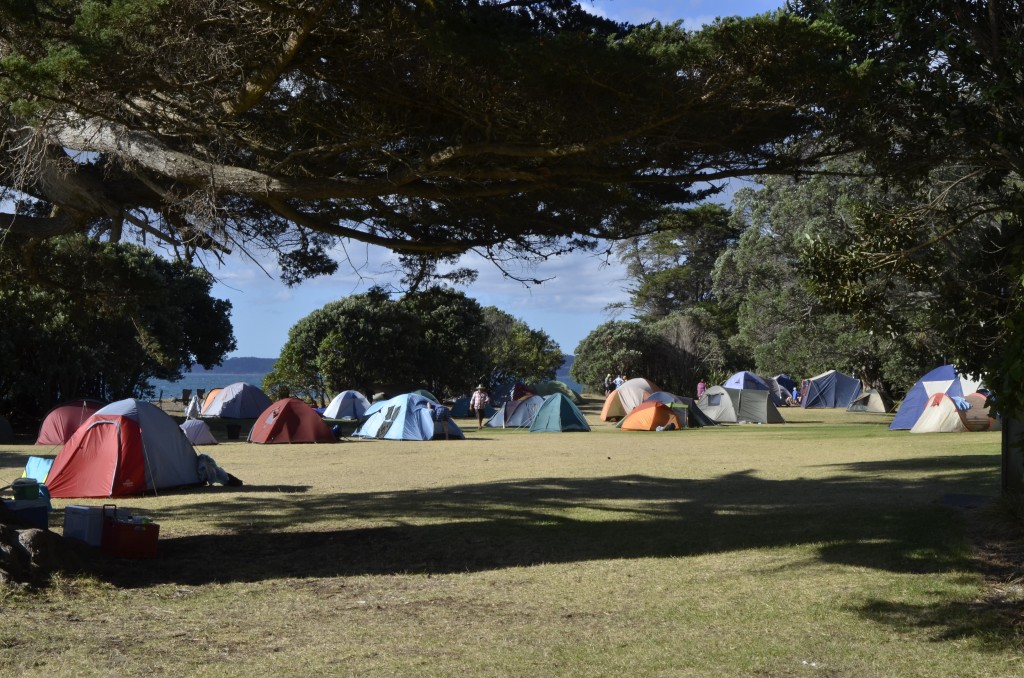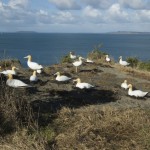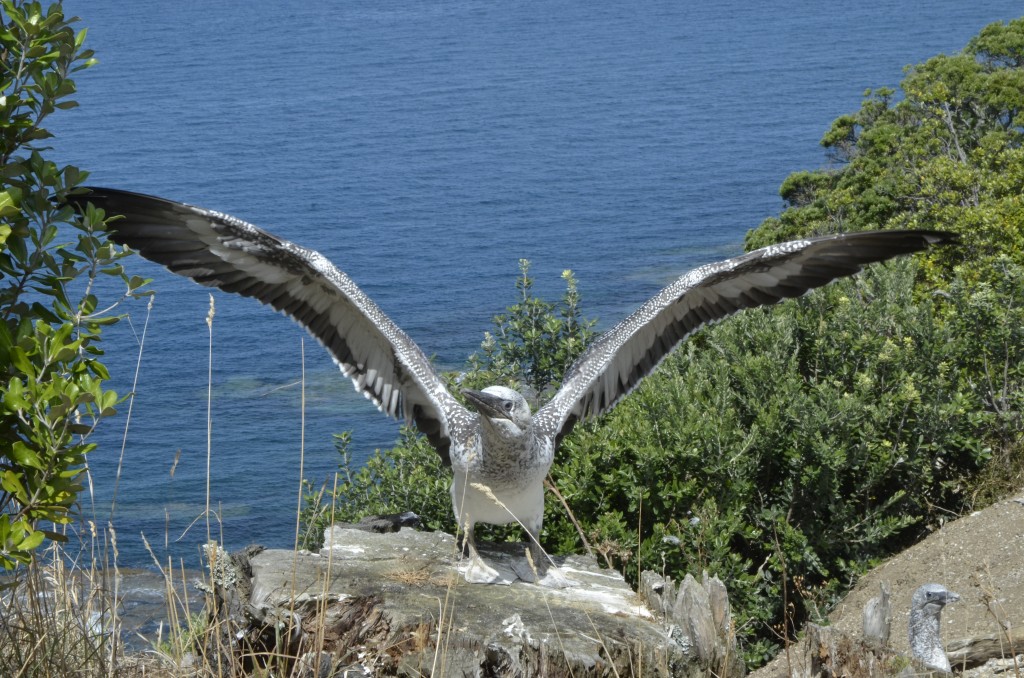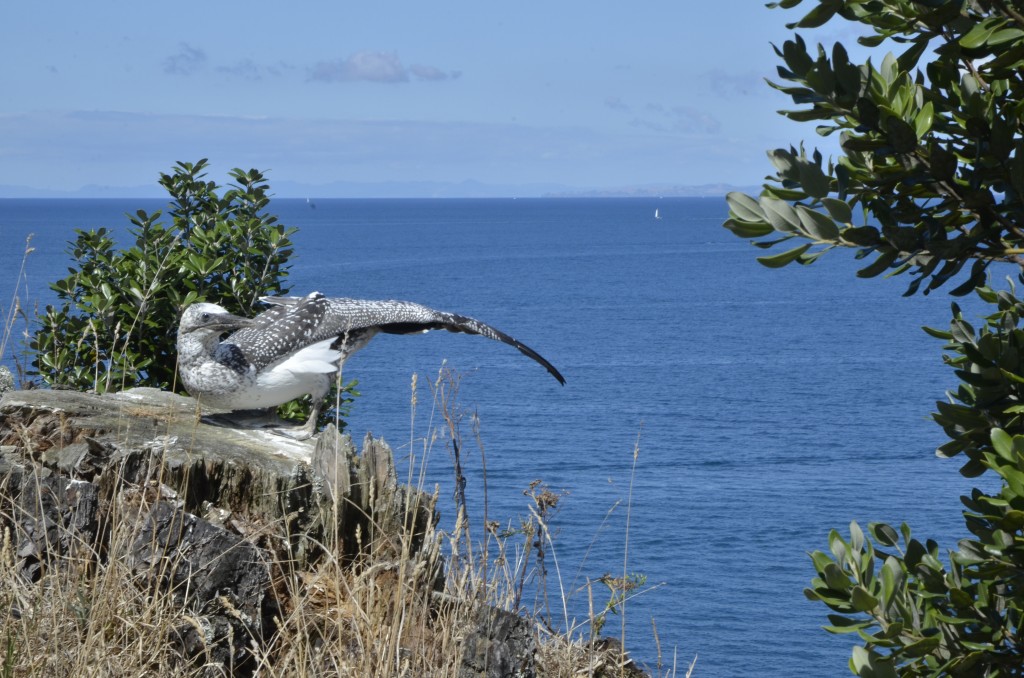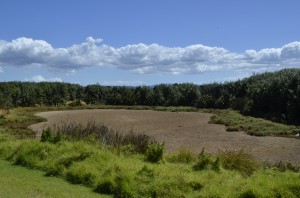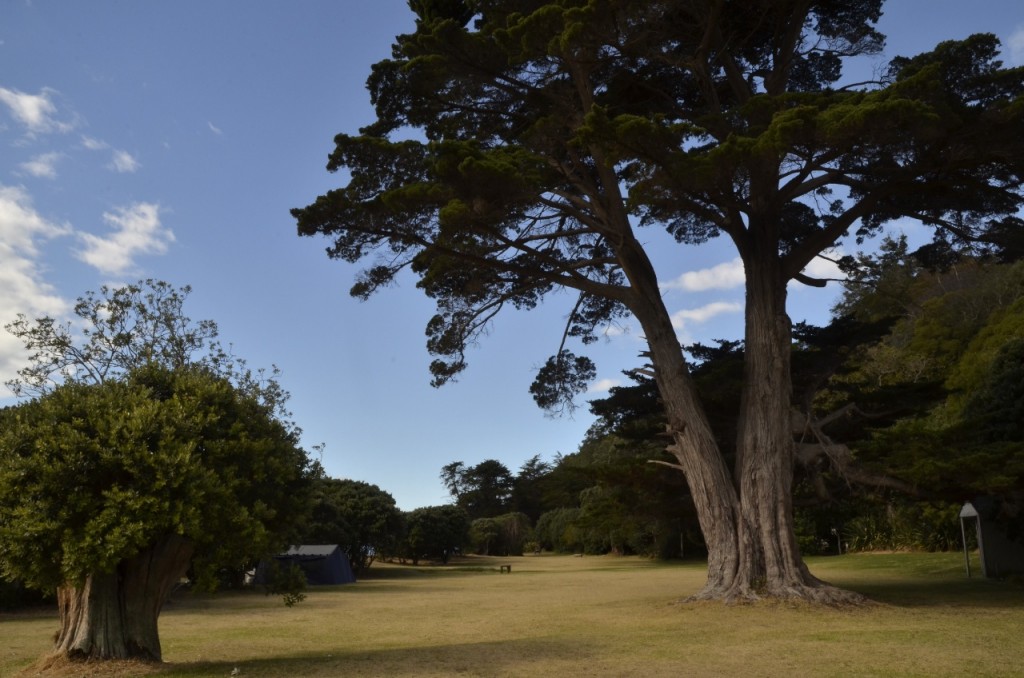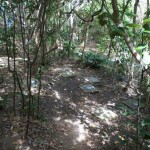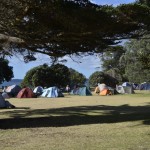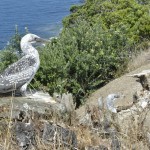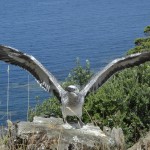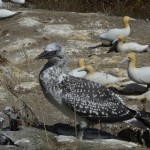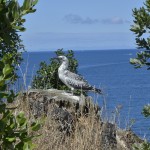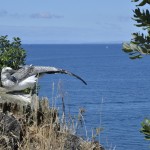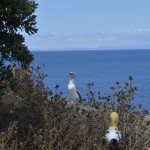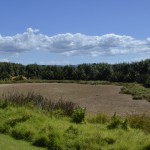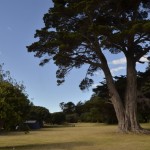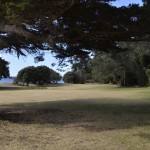During the April workday on Motuora the chairperson of the Motuora Restoration Society, Ray Lowe farewelled Sian Potier and Toby Shanley, island co:managers since 2012 and welcomed the new manager Vonny Sprey.
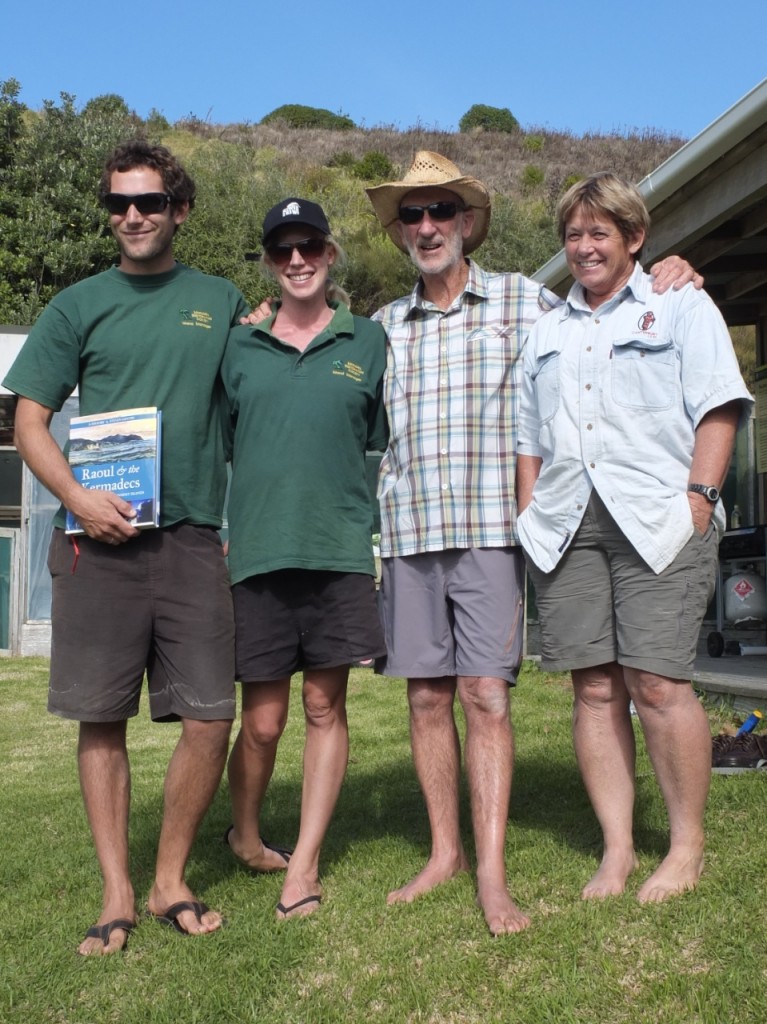
Toby Shanley, Sian Potier, Ray Lowe and Vonny Sprey
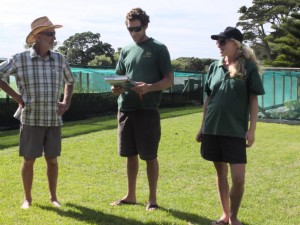
Ray Lowe with Sian and Toby after presentation of Raoul Island book
Sian and Toby came to Motuora after honing their conservation skills on Raoul Island in the Kemadecs. Their unique combination of skills enabled them to manage Motuora superbly. The Motuora Restoration Society delights in the accomplishments of these young professionals and the prodigious work that they have done on Motuora. We are sorry to see them leave but wish them well as they continue their conservation work and start a family. In appreciation for their work for the Motuora Restoration Society Ray presented Toby and Sian with a book on Raoul Island and the Kemadecs.
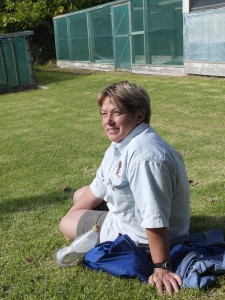
Vonny Sprey the new Motuora Island Manager
Remarkably the Society has managed to employ a new island manager, Vonny Sprey who has also honed her environmental skills on Raoul. Originally from a farming background she has much conservation and outdoors experience. Apart from Raoul and her Turangawaewae—Kapiti Island—her favourite places are Enderby Island and the diving around the Poor Knights but she suspects that Motuora will be added to that list. The Motuora Restoration Society is pleased to welcome another well qualified and capable person as the Manager of Motuora.
The Annual General Meeting of the Motuora Restoration Society was held on May 25th in the Silverdale St Johns Ambulance building. Originally scheduled to take place on Motuora the meeting was transferred to Silverdale because the weather forecast predicted winds that would make landing and leaving the island difficult.
Twenty-two members attended. Kit Brown, Treasurer, presented the Chairperson’s Report as Ray Lowe was unwell. (Click to download pdf copy of Report)
The following members were elected to the Motuora Restoration Society:
Chairperson: Ray Lowe; Treasurer: Lakshmanan Nataraj; Secretary: Kit Brown; Committee Members: Colin Cordes, Les Buckton, Kevin Hawkins, Helen Lindsay, Liz Norquay, Bruce Ross and John Stewart.
At the AGM John Stewart formally thanked Jill Thomas for her 11 years as the Society’s Treasurer. Her vital contribution ensured that the Society’s accounts were diligently and efficiently managed. After a vote of thanks, passed with acclamation Jill was presented with a small gift.
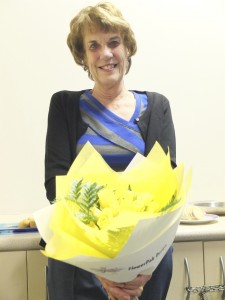
Jill Thomas, Treasurer of Motuora Restoration Society 2002-20014
Stephen Wallace, a masters student at Auckland University, presented the initial findings of his study of the insect population in the newly planted forest compared to established remnant bush on Motuora. This is a follow up study on the work done by Robin Gardner-Gee 10 years ago. Watch this space for a blog by Stephen outlining his findings.
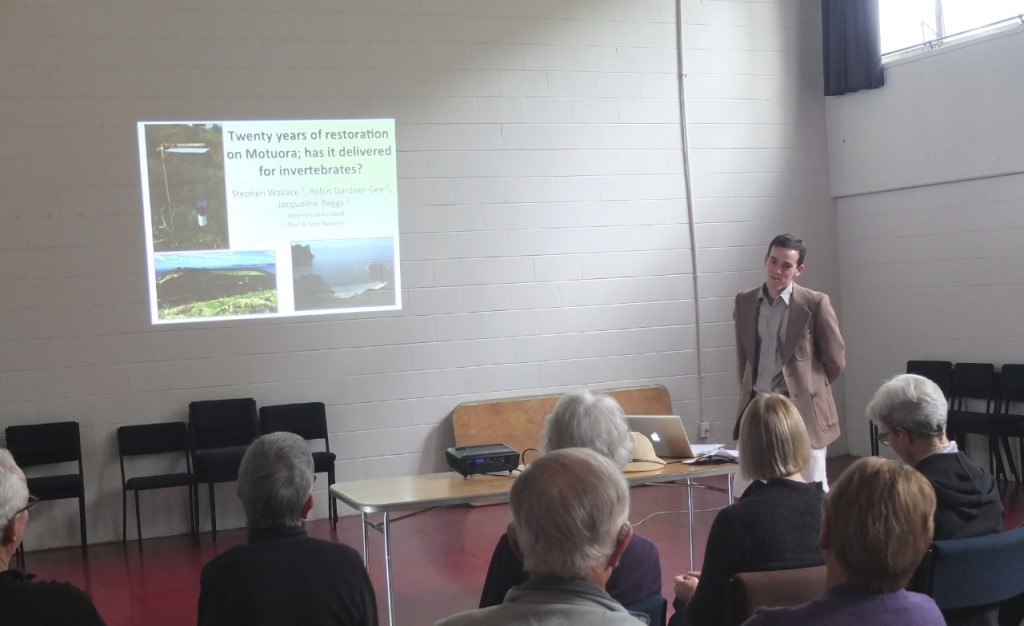
Stephen Wallace presenting at AGM
Apart from farewelling Sian and Toby and welcoming Vonny the 14 volunteers and members worked during the April workday on Motuora to clean the gannet site and decoys, tend to some track clearance and weed nursery seedlings. Below is a gallery of photos taken during the April workday. (Click on each image to see full size)
-
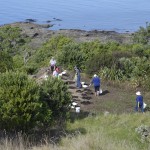
-
Refurbishing the decoys at the gannet nesting site
-
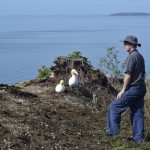
-
John Stewart co:ordinator of Pycroft's petrel translocation contemplating future seabird translocations
-
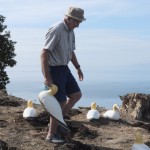
-
Les Buckton (orginal MRS Chairman) setting up gannet decoy after cleaning
-
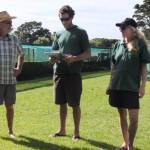
-
Ray Lowe with Sian and Toby after presentation of Raoul Island book
-
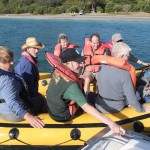
-
Ray Lowe navigating inflatable dingy to water taxi.
-
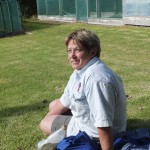
-
Vonny Sprey the new Motuora Island Manager
-
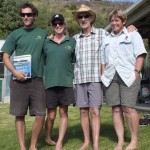
-
Toby Shanley, Sian Potier, Ray Lowe and Vonny Sprey
-
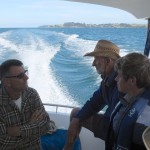
-
Kevin Hawkins, Ray Lowe and Vonny Sprey on water taxi leaving Motuora 27/05/14
-
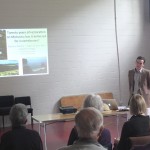
-
Stephen Wallace presenting at AGM
-

-
Jill Thomas, Treasurer of Motuora Restoration Society 2002-20014
-

-
MRS ANNUAL REPORT 2014
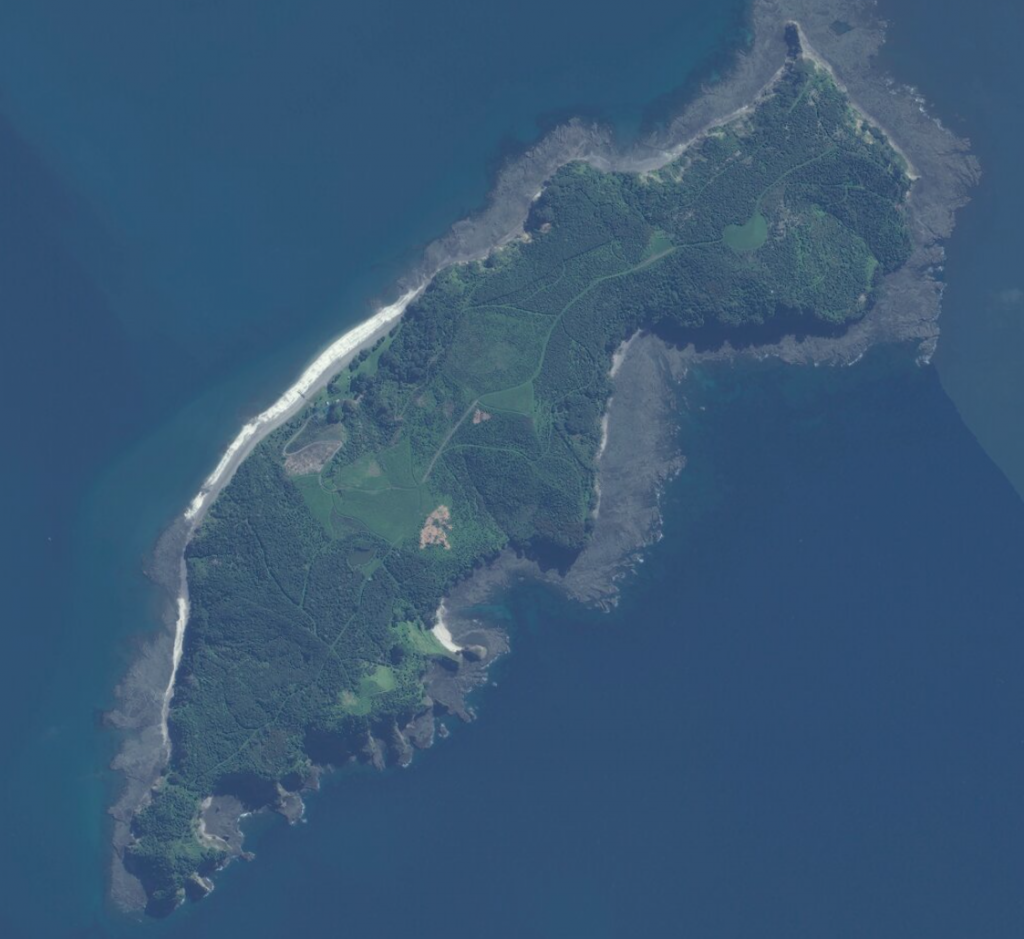 Angie Cole’s photos taken in March 2015 provide a closer aerial perspective of Motuora.
Angie Cole’s photos taken in March 2015 provide a closer aerial perspective of Motuora.


